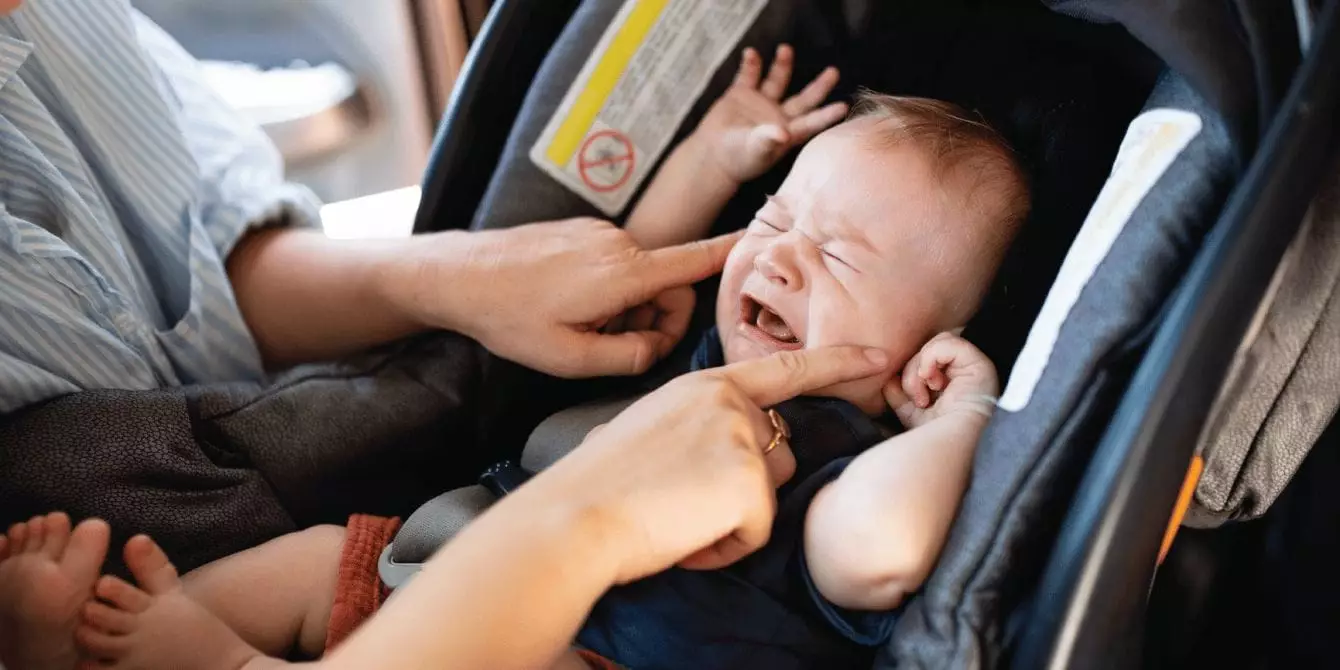Traveling with a young child can be one of the most challenging aspects of parenthood. For many parents, the inevitable wail of a crying baby when placed in a car seat transforms an ordinary trip into a mental battlefield. While car seats are designed with safety as a priority, comfort and emotional reassurance are often overlooked. Children instinctively react to being restrained and separated from their primary caregivers, interpreting these moments as distressing, which triggers intense crying episodes. This universal parenting dilemma underscores an emotional and practical conundrum: how do we protect our children physically while also calming their distressed minds? The problem is not solely the noise but the emotional toll it takes on both infant and parent, affecting everything from parental stress levels to safe driving conditions.
The Psychological Factors Behind Infant Crying in Transit
Understanding why babies cry during car rides is fundamental to addressing their discomfort effectively. Infant cries serve a purpose—they are signals that communicate unmet needs or emotional distress. Specifically, when a child is in a car seat, they often experience separation anxiety because they cannot see their parent, feel insecure, or lack the sensory stimuli they find comforting on familiar surroundings. Dr. Teri Mitchell’s insights shed light on this phenomenon, highlighting the “separation distress cry” as a primitive but powerful response meant to invoke parental care and reassurance. In the confined space of a car, these cries are amplified, tapping into the infant’s natural survival instincts and generating an intense emotional reaction in parents—who often feel helpless, anxious, and overwhelmed. This emotional response can become a destabilizing cycle, further exacerbating the child’s distress, creating a feedback loop of misery.
Practical Strategies to Minimize Discomfort and Promote Peace
While the emotional factors are deep-rooted, parents are not powerless. Small, intentional strategies can significantly improve the experience for both baby and driver. First and foremost, ensuring the child’s comfort at the outset is crucial. Adjusting the car seat environment—such as avoiding snug or uncomfortable strap placement—can make a difference. Introducing items like StrapsAway, which keeps straps out of the baby’s view during loading, reduces startling sensations and helps the baby settle more quickly. Building familiarity through repeated but positive exposure to car rides can turn a dreaded event into an anticipated routine. Consistency is key—short, pleasant trips with toys, music, or even simply neutral conversation can forge new associations where the car becomes a safe, calming space.
Positioning also plays a critical role. Small adjustments—like shifting the rear-facing seat slightly away from the edges of the seats—can smooth out vibrations and reduce bumpy sensations that unsettle babies. Moreover, temperature regulation is often overlooked: dressing the baby in appropriate clothing, avoiding bulky jackets, and using the vehicle’s climate control prevents overheating, a common source of discomfort. Planning journeys around a child’s natural nap times can also capitalize on their sleep cycle, making longer trips less stressful when they are already inclined to rest.
The Power of Sound and Scent in Car Seat Comfort
One of the most effective tools in a parent’s arsenal is the use of auditory stimuli. Babies respond favorably to music and familiar sounds, which have been scientifically shown to soothe them far better than unfamiliar noises or speech. Creating a playlist of lullabies or favorite nursery rhymes, and singing along, not only calms the infant but also establishes a sense of security rooted in familiarity. For parents, this can transform a stressful ordeal into a bonding moment.
In addition, specialized sound machines, like the “orange miracle,” which mimics human voices and shushes children into calmness, offer portable solutions that work across environments—from cars to strollers, to bedrooms. Their adjustable volume settings ensure that the sound remains within comfort levels, preventing overstimulation. Harnessing these sound-based techniques, combined with gentle reassurance, can make profound differences.
Physical Comfort: Managing Reflux, Gases, and Temperature
Certain health issues, such as reflux or gassiness, complicate car travel for little ones. Babies with stomach sensitivities may experience pain or discomfort when constrained in a car seat, often exacerbated if mealtime occurs immediately before traveling. Parents should plan their journeys to give their baby ample time to digest and avoid feeding close to departure. For reflux sufferers, discussing safe management strategies with a pediatrician—including natural remedies—can dramatically improve ride comfort.
Handling gas is equally important; ensuring the child is adequately burped before journeying mitigates discomfort. Some parents find that children who are too warm in the car become irritable, so dressing in light, breathable clothes and avoiding bulky layers—like heavy coats—can prevent overheating. Not only does this enhance comfort, but it also keeps straps snug and effective.
The Long Road to Serenity: Patience and Time
Despite all efforts, there will be days when crying persists longer than parents might wish. Patience becomes essential, as children naturally outgrow their initial car-seat resistance. Many parents report that with consistent, gentle exposure—allowing their children to gradually acclimate—the phase of crying during rides eventually diminishes. It’s vital to remember that these challenging phases are temporary. Maintaining a positive outlook and exercising patience can transform a stressful ordeal into a manageable routine. Children grow and adapt, and what feels overwhelming now will soon fade into distant memory. The key lies in perseverance, empathy, and the willingness to try different approaches until the right combination works for your unique child.

